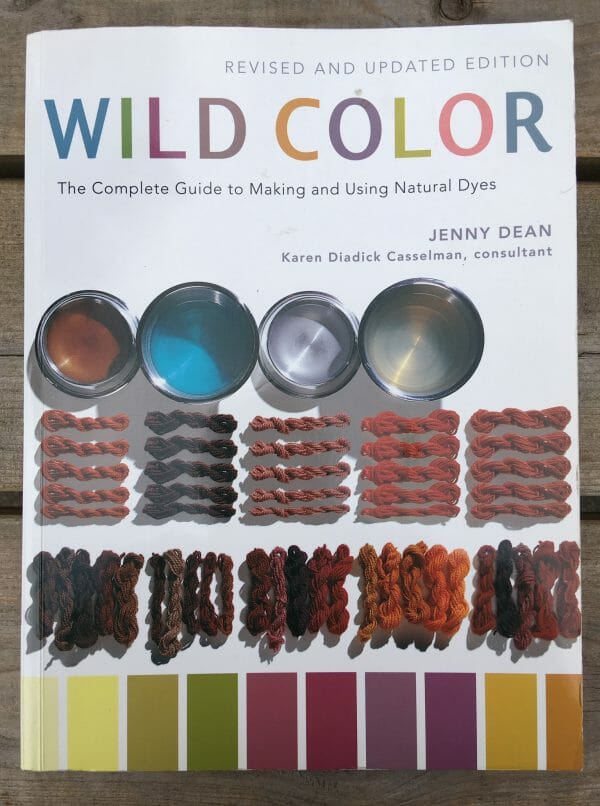This month I’m talking about the heroes and (usually) heroines of the dyeing world. First up is India Flint (@prophetofbloom) who strides the world with eco-dyed cloth streaming out behind her, dyeing, teaching and exhibiting and encouraging us all to let go a bit. India describes herself as a ‘botanical alchemist’. She discovered and promoted ‘eco-printing’ onto fabric based on the dyed Easter eggs her grandmother used to make but using the eucalyptus leaves she found in her native Australia. Active on social media she now has followers across the world.

My second dyeing hero(ine) is Jenny Dean. Jenny has been dyeing using natural dyes for over 40 years and in that time has written books and now blogs on her website. Her advice is generously given and is always clear and methodical. Wild Colour’ is always my first go-to book when I’m dyeing. If you only get one book on natural dyeing, this is the one. Jenny must have inspired many thousands of people to pick up the dye pot and is still going strong.

But oddly my third hero is the chemist William Perkin who in 1856 stumbled across the first synthetic organic dye, mauveine, an intense purple colour. By the early 20th century synthetic dyes had largely replaced dyeing with traditional botanical dyes at a commercial level. His hero status may seem out of place given my enthusiasm for natural dyeing but it largely ended decades, if not centuries, of dye workers working in gruelling, dangerous and noxious conditions to create the colours everyone was craving. Globally the textile industry still has a long way to go to reduce its environmental impact, especially on waste water (as discussed in this Guardian article) but the workers at least are better protected. The charvesting of many traditional, natural dyes had a devastating environmental impact, endangering species and in the case of some lichens causing them to become extinct. Crafters and hobbylists can have a lot of fun and creativity with botanical dyes but lets thank William Perkin for the safe working conditions of most 21st century commercial dyers.




